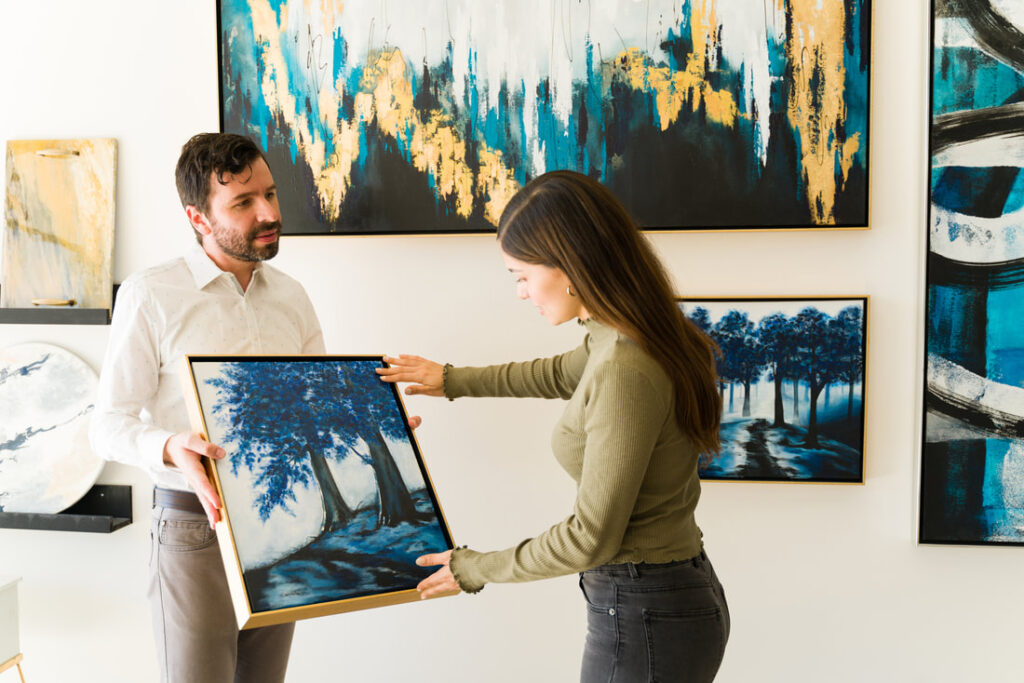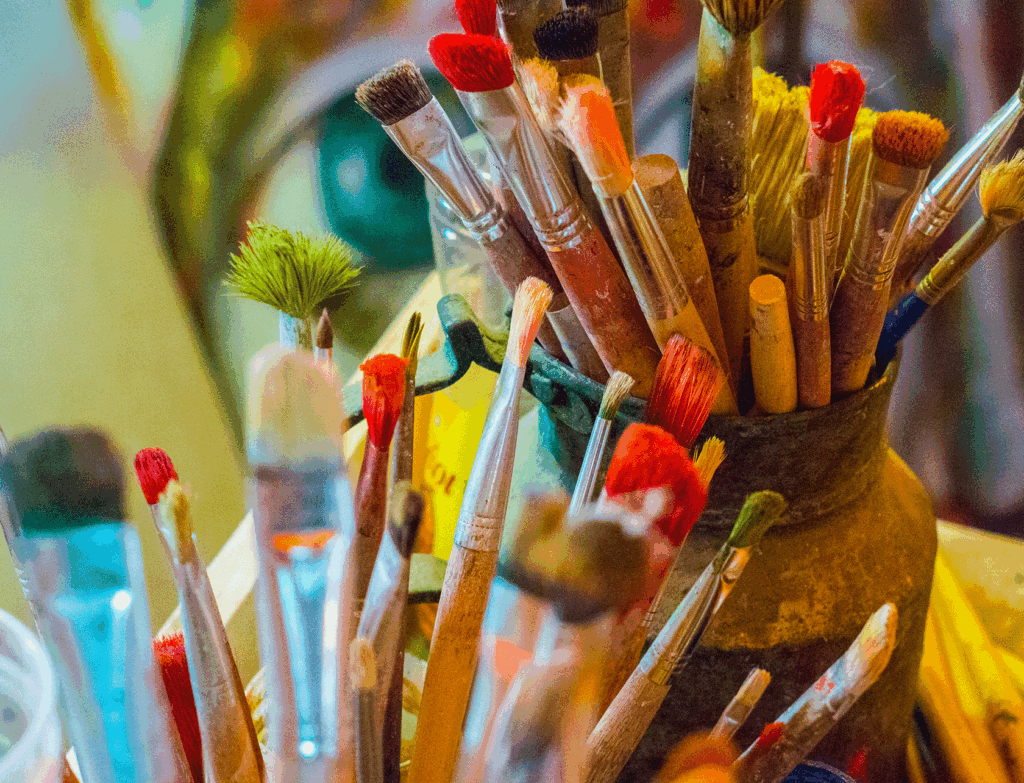
Finding the right gallery to represent your artwork is a critical step in an artist’s career. It’s not just about getting your art on the walls; it’s about finding a partnership that aligns with your artistic vision, career goals, and business aspirations. In this article, we’ll explore the significance of choosing the right gallery, offer strategies for getting your art into a gallery, and provide a list of insightful questions that will help you determine whether a gallery is the right fit for you.
Why Finding the Right Gallery is Crucial
- Alignment with Artistic Vision: A gallery that resonates with your artistic vision will better understand and represent your work to the right audience. Galleries often have a distinct style or niche, and it’s important to find one that complements your art. When a gallery believes in your work, they can more effectively advocate for it, creating a stronger connection with potential buyers.
- Professional Growth: The right gallery can be a catalyst for your professional growth. They offer exposure to a broader audience, including collectors, critics, and other artists. This can lead to opportunities such as exhibitions, media coverage, and networking with influential figures in the art world. A good gallery relationship also includes mentorship, helping you navigate the complexities of the art market.
- Financial Stability: Galleries play a crucial role in managing the business side of art, including pricing, sales, and contracts. A gallery that understands your value and can effectively market your work can provide a more consistent income stream. They also handle logistical aspects such as shipping, framing, and insurance, allowing you to focus on your creative process.
- Long-Term Partnership: The relationship between an artist and a gallery is often a long-term partnership. It’s important to find a gallery that sees potential in your work and is committed to helping you build your career over time. This partnership should be based on mutual respect, trust, and clear communication.
How to Get Your Art into a Gallery
Getting your art into a gallery is a multifaceted process that requires research, preparation, and persistence. Below are some strategies to help you navigate this journey:
- Research Galleries: Start by researching galleries that align with your artistic style and career goals. Look for galleries that represent artists with similar work or themes. Visit galleries in person if possible, attend openings, and engage with the art community to get a feel for different gallery environments.
- Build a Strong Portfolio: Your portfolio is your first impression, so make it count. Include high-quality images of your best work, a well-written artist statement, a CV, and any press or exhibition history. Your portfolio should reflect your artistic identity and the evolution of your work.
- Network with Industry Professionals: Building relationships with other artists, gallery owners, and art professionals can open doors to gallery representation. Attend art openings, fairs, and other industry events where you can meet and network with gallery owners and curators. Be genuine and interested in their work as well, as relationships in the art world are often built on mutual respect and shared interests.
- Start Local: Consider starting with local or regional galleries before reaching out to more prestigious ones. Local galleries are often more accessible and can provide valuable experience. Once you’ve established yourself locally, it becomes easier to approach larger galleries.
- Submit Your Work Professionally: When submitting your work to a gallery, follow their submission guidelines carefully. If a gallery does not accept unsolicited submissions, respect their policy. For those that do, make sure your submission is professional, concise, and personalized to the gallery.
- Participate in Group Shows: Group exhibitions are a great way to get your foot in the door. They allow you to showcase your work alongside other artists and get noticed by gallery owners and collectors. Group shows can lead to solo exhibition opportunities if your work resonates with the gallery and its audience.
- Create an Online Presence: A strong online presence can attract the attention of gallery owners. Maintain a professional website with your portfolio, artist statement, and contact information. Utilize social media platforms like Instagram to showcase your work and engage with followers. Many galleries now look at an artist’s online presence as part of their evaluation process.
Questions to Ask a Gallery Owner/Manager
When you reach the point where a gallery is interested in representing your work, it’s essential to ask the right questions. These questions will help you assess whether the gallery is a good fit and demonstrate that you are a knowledgeable and seasoned artist:
- What is your gallery’s vision and focus?
- Understanding the gallery’s vision will help you determine if it aligns with your artistic goals. A gallery’s focus on certain styles, mediums, or themes can indicate whether your work will be a good fit.
- How do you select artists for representation?
- This question shows that you are serious about the selection process and helps you understand the criteria the gallery uses to choose artists. It also gives you insight into how they view your work in the context of their gallery.
- What kind of marketing and promotional support do you offer your artists?
- Effective marketing is crucial for the success of your work. Ask about their strategies for promoting exhibitions, including online marketing, media outreach, and collector engagement.
- What percentage of sales does the gallery take, and how are payments handled?
- Understanding the financial aspects of gallery representation is essential. Inquire about the commission structure, payment timelines, and whether they offer advances or cover production costs.
- Can you provide references from other artists you represent?
- Speaking with other artists who are currently represented by the gallery can give you valuable insights into the gallery’s professionalism, communication style, and overall experience.
- How often do you hold solo or group exhibitions?
- This question helps you gauge how frequently you might have the opportunity to showcase your work. It also indicates how committed the gallery is to promoting their artists.
- What is your policy on exclusivity?
- Some galleries require exclusivity, meaning you can’t show your work in other galleries within a certain geographic area. Make sure you understand the terms and whether they align with your career plans.
- What is your approach to pricing artwork?
- Pricing is a critical aspect of selling art. Ask how they determine the price of artwork and whether they will work with you to set prices that reflect the value of your work while appealing to buyers.
- How do you handle the logistics of exhibitions (shipping, installation, insurance)?
- Logistics can be a significant part of the exhibition process. Ensure that the gallery has a clear plan for handling these aspects and that you are comfortable with their approach.
- What are your expectations for artists in terms of participation and communication?
- Understanding the gallery’s expectations for your involvement in exhibitions, openings, and other events is important. This will help you determine if you can meet their expectations and whether their approach fits with your working style.
- How do you cultivate relationships with collectors and other industry professionals?
- A gallery’s network can be a valuable asset for an artist. Inquire about how they engage with collectors, curators, and critics to help you build your reputation and expand your reach.
- What is the process for renewing or ending a representation agreement?
- Clarifying the terms of your agreement, including how it can be renewed or terminated, will help you avoid any misunderstandings in the future.
Answering Key Questions
How do I get my art into a gallery?
Getting your art into a gallery requires a combination of preparation, persistence, and networking. Start by researching galleries that align with your artistic style and build a strong portfolio that showcases your best work. Engage with the art community by attending events, networking with industry professionals, and participating in group exhibitions. When submitting your work to galleries, follow their guidelines and ensure your submission is professional and tailored to each gallery.
How to get your artwork into a gallery?
To get your artwork into a gallery, focus on creating a cohesive and compelling body of work that reflects your artistic vision. Research potential galleries that align with your style and values, and build relationships with gallery owners and curators. Submit your work professionally, respecting each gallery’s submission process. Consider participating in local group shows to gain exposure and build your reputation within the art community.
How to get your art into a gallery?
Getting your art into a gallery involves identifying galleries that are a good fit for your work and career goals. Develop a strong online presence to showcase your work and connect with potential galleries. Network with other artists, collectors, and gallery owners, and be persistent in your efforts. Tailor your submissions to each gallery, highlighting why your work would be a good addition to their roster.
How to get art into a gallery?
To get art into a gallery, start by understanding the gallery’s niche and ensuring your work aligns with their focus. Build a portfolio that reflects your artistic identity and engage with the art community to create connections. Submit your work according to the gallery’s guidelines, and consider starting with local galleries to gain experience before approaching larger ones.
How to get into an art gallery?
Getting into an art gallery requires a proactive approach. Begin by researching galleries that resonate with your artistic style and values. Develop a professional portfolio and online presence, and actively participate in art events to network with industry professionals. When submitting your work, ensure your presentation is professional, concise, and tailored to each gallery. Persistence and patience are key as you work towards gallery representation.
Finding the right gallery to represent your artwork is a pivotal moment in your artistic career. It requires careful consideration, research, and preparation, but the rewards can be substantial. By aligning yourself with a gallery that understands and supports your vision, you can achieve greater exposure, professional growth, and financial stability.
Remember, getting your art into a gallery is not just about showcasing your work; it’s about building a long-term partnership that can help you navigate the complexities of the art world. By asking the right questions and being strategic in your approach, you can find a gallery that will be a true advocate for your art and a key partner in your creative journey.



Leave a Reply